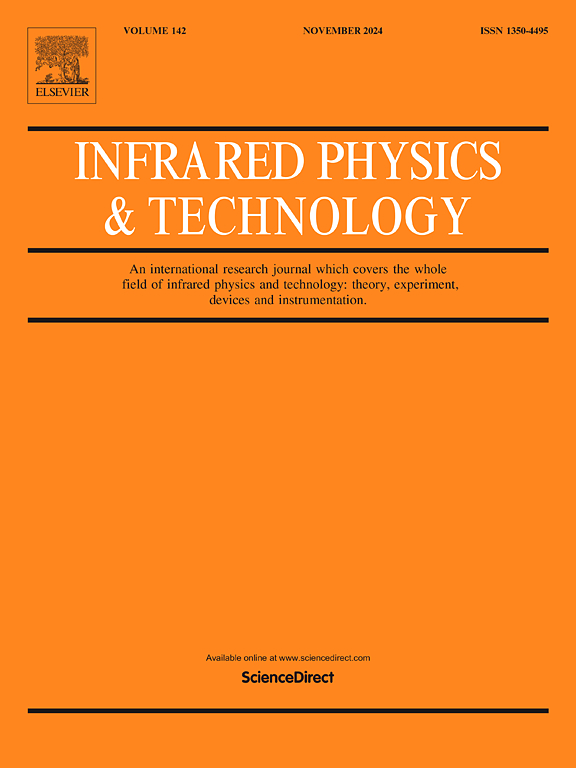Multi-spectral infrared thermography using finite element emissivity modelling for high-temperature measurements on metallic surfaces
IF 3.1
3区 物理与天体物理
Q2 INSTRUMENTS & INSTRUMENTATION
引用次数: 0
Abstract
Accurate high-temperature radiation thermometry of opaque surfaces (from 800 to ) is critical for controlling industrial processes and ensuring product quality. However, its accuracy is limited by inadequate knowledge of the material’s optical properties and their spectral and thermal dependencies. Multi-spectral thermography addresses this challenge by identifying the surface temperature while considering its emissivity spectra. Here, we propose a method combining infrared radiometric measurements with deterministic inverse modelling, where emissivity is interpolated using a P1-1D finite element polynomial basis to attenuate the systematic and stochastic components of the identification error. Monte Carlo simulations and experimental validations using an induction heater and a multi-spectral infrared camera calibrated at four wavelengths demonstrate transient-state temperature uncertainties below 5%. Numerical hyperspectral assessments with 20 wavelengths further demonstrate significant bias reduction with increased spectral resolution. These findings establish an advancement towards reliable, dynamic, non-contact temperature measurement in industrial metallurgical environments.
利用有限元发射率模型对金属表面进行高温测量的多光谱红外热成像
不透明表面的精确高温辐射测温(从800到1200K)对于控制工业过程和确保产品质量至关重要。然而,由于对材料的光学特性及其光谱和热依赖关系的了解不足,其准确性受到限制。多光谱热成像通过识别表面温度同时考虑其发射率光谱来解决这一挑战。在这里,我们提出了一种将红外辐射测量与确定性逆建模相结合的方法,其中发射率使用P1-1D有限元多项式插值,以衰减识别误差的系统和随机成分。蒙特卡罗模拟和使用感应加热器和在四个波长校准的多光谱红外相机的实验验证表明,瞬态温度不确定性低于5%。20个波长的数值高光谱评估进一步表明,随着光谱分辨率的提高,偏差显著减少。这些发现为工业冶金环境中可靠、动态、非接触的温度测量奠定了基础。
本文章由计算机程序翻译,如有差异,请以英文原文为准。
求助全文
约1分钟内获得全文
求助全文
来源期刊
CiteScore
5.70
自引率
12.10%
发文量
400
审稿时长
67 days
期刊介绍:
The Journal covers the entire field of infrared physics and technology: theory, experiment, application, devices and instrumentation. Infrared'' is defined as covering the near, mid and far infrared (terahertz) regions from 0.75um (750nm) to 1mm (300GHz.) Submissions in the 300GHz to 100GHz region may be accepted at the editors discretion if their content is relevant to shorter wavelengths. Submissions must be primarily concerned with and directly relevant to this spectral region.
Its core topics can be summarized as the generation, propagation and detection, of infrared radiation; the associated optics, materials and devices; and its use in all fields of science, industry, engineering and medicine.
Infrared techniques occur in many different fields, notably spectroscopy and interferometry; material characterization and processing; atmospheric physics, astronomy and space research. Scientific aspects include lasers, quantum optics, quantum electronics, image processing and semiconductor physics. Some important applications are medical diagnostics and treatment, industrial inspection and environmental monitoring.

 求助内容:
求助内容: 应助结果提醒方式:
应助结果提醒方式:


